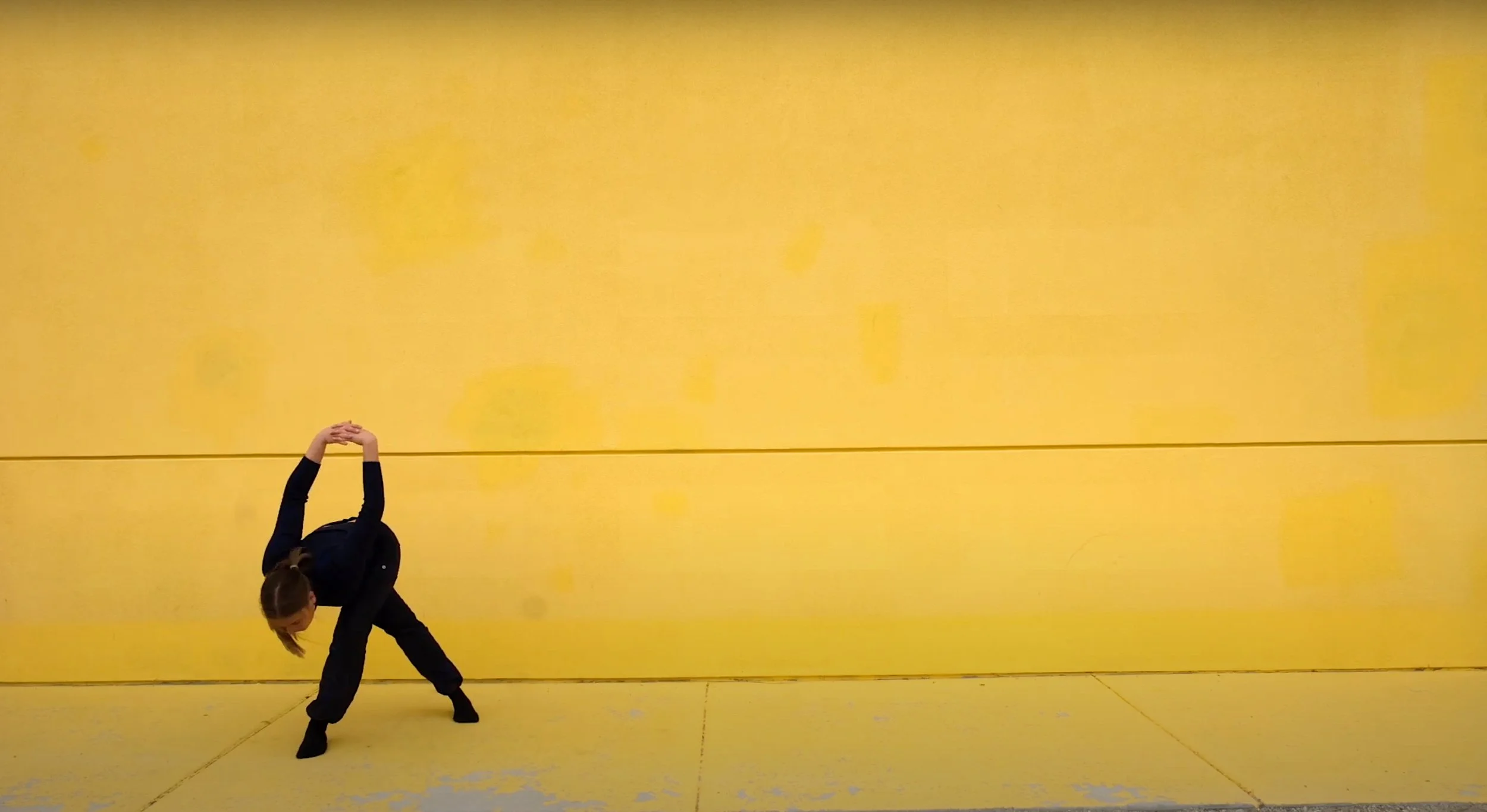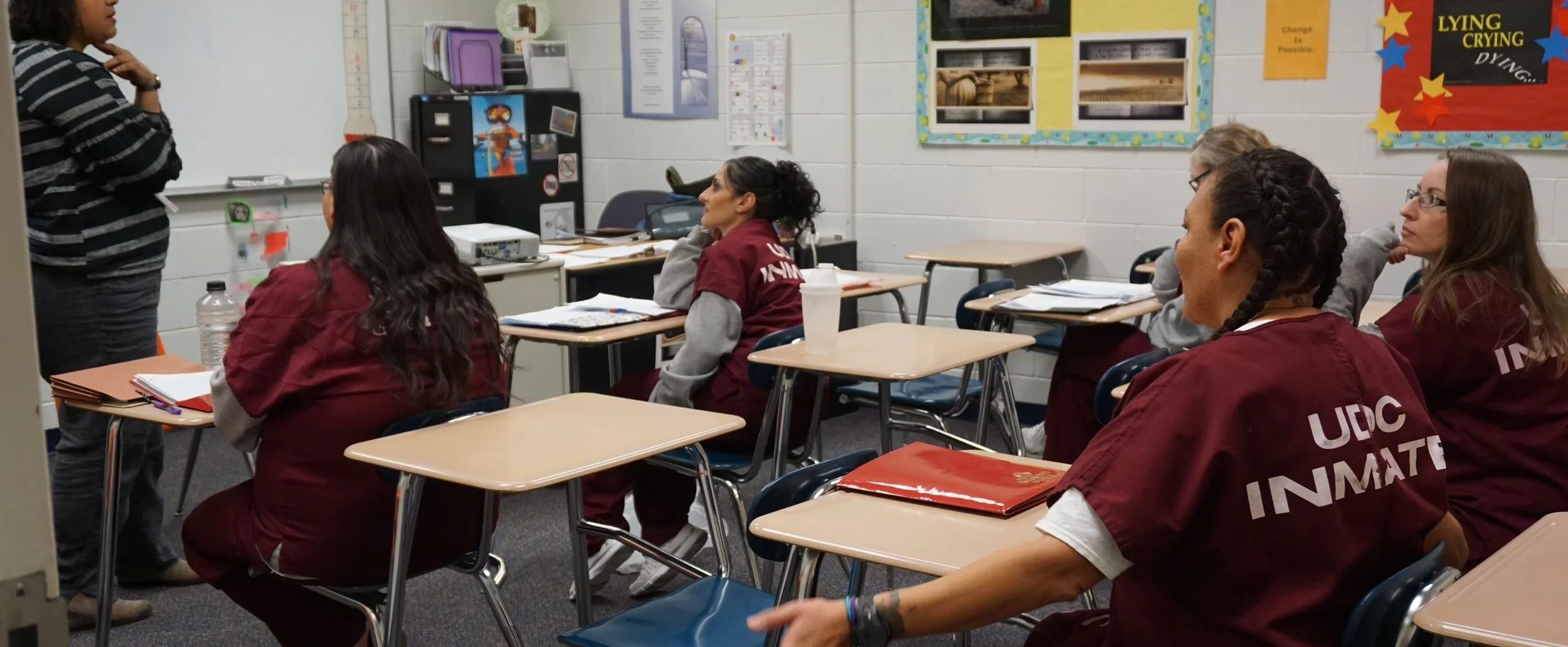Philosophies of Teaching
From a young age, I was drawn to dance because it helped me feel real –
I felt my tactile, tangible self
Feet on the ground
Wind on my skin
Bones tumbling through space
My own mass had impact. Dancing gave me access to ways of being not possible before.
Davidson College students performing “Terribly Bright”, Spring 2023
My studio-based courses are physically and intellectually rigorous because of my background in Somatics. Embedded in my studio courses are developmental movement patterns that coordinate neuromuscular pathways. Practicing these connections have a calming, soothing, and restorative effect on the nervous system. Simultaneously, I love “turning up the dial” on physicality, like you are turning up your favorite song on the radio. It is important for my class to have an effervescent arc that sends students into joyous sweat. This playful, whimsical, approach to studio-based classes is designed to help students regulate within the parasympathetic nervous system response. Oftentimes, in dance training, it is common to experience a sympathetic, or “fight or flight” survival response. My intentions as a dance educator are to coach students into a “rest and digest” response. I want them to practice curiosity, play, and experiment as an active participant in their own education, which increases the overall learning and retention of knowledge.
Former student Lilly Hammond’s choreographic work “Love That Process” at the University of Utah, School of Dance
As an Educator, when I openly acknowledge all parts of my identity, I noticed the quality of the classroom shift -- my students soften with relief, or brightly exclaim “me too”! I love when students step into new learning “terrain” – their eyes light up, they talk faster, their energy rises – their whole physically moves towards learning. I am invested in the humanity of education, and by signaling my multi-faceted self, I find my students critically think about how their identity impacts how they understand the world around them too.
Community-based, culturally responsive learning is at the heart of my pedagogical practices. I actively look to engage with students who have previously been excluded from Arts Education. I branch out into the community, and currently teach incarcerated students through the University of Utah Prison Education Project. The demographics of incarcerated students are racially and ethnically diverse. A statistically significant number of incarcerated people identify as having a disability and come from socio-economically disenfranchised communities. Most importantly, this population scores higher than average on the Adverse Childhood Experiences Scale (ACEs). Meaning there is a relationship between their childhood and environmental experiences and how it impacts their health, life expectancy, relationships, and life choices.
I am a dance artist and educator who firmly believes that inclusive education is transformative. Education creates access to critical information and helps students imagine different modalities of existing in the world.
As a dance educator specializing in trauma-informed practice and inclusive pedagogy, I have studied extensively within the field of Somatics. Somatic practices are both physical and philosophical, rooted in Eastern and Indigenous traditions, which consider the mind and body as one. Through neuromuscular coordination, self-reflection, and proprioception, I evoke rich and dynamic physicality, creative innovation, and critical inquiry in all of my classes. Body-based learning, and experiencing the body from within, is essential to how I hold space in the classroom. Interested in countering the authoritative, product-based, progress over experience, western concert dance training narrative, I use Somatics as a tool for curiosity, agency, joy, and reflection within my dance classrooms.
I encourage and actively make space for differing perspectives and honor students’ identities and cultural backgrounds. There are a few ways I practice this in the classroom:
(1) I explain things in multiple ways often to ensure I am not using language that excludes --- committed to serving first-generation college students, students where English is a second language, students with learning disabilities, or students who are from socio-economic disenfranchised places.
(2) I introduce varying points of view in course content, teaching different perspectives from history to get a larger, more richly complex, idea of the course materials in context.
(3) I spend time getting to know my students and building an environment that is specifically tailored to their learning.
(4) My students feel comfortable enough to ask really interesting questions.
(5) I listen attentively to what my students are communicating verbally and nonverbally. I am constantly thinking about what other ways can I introduce information to access all learning modalities.
(6) I encourage and model the notion of “many right ways” – meaning that the classroom can be a thought-provoking container to hold multiple viewpoints. This idea of contrast, or conflicting values, is not tearing us apart but instead is pulling our hearts open to something much larger than ourselves.
University of Utah Prison Education Project students in class
These experiences working with incarcerated students, who claim to have little-to-no knowledge of dance but a wealth of embodied history, have deeply impacted how I interact with all my students. I am an approachable, empathetic, and respectable educator. I want my students to grow and transform in ways that are meaningful to their core beliefs. Therefore, I communicate in clear, direct, and socially conscious ways in order for them to thrive in the classroom and beyond.
Ultimately, in whatever course I am teaching, I want my students to know themselves better and critically inquire about the world around them. Instead of definitive, right-or-wrong thinking, my students are encouraged to hold the paradox of knowing and not knowing together. This approach models the complexity of life where students can ignite lifelong curiosity.
Out of respect for my students, please message me to view my teaching video excerpts
University of Kentucky students performing “Myself Through You”, Spring 2022




